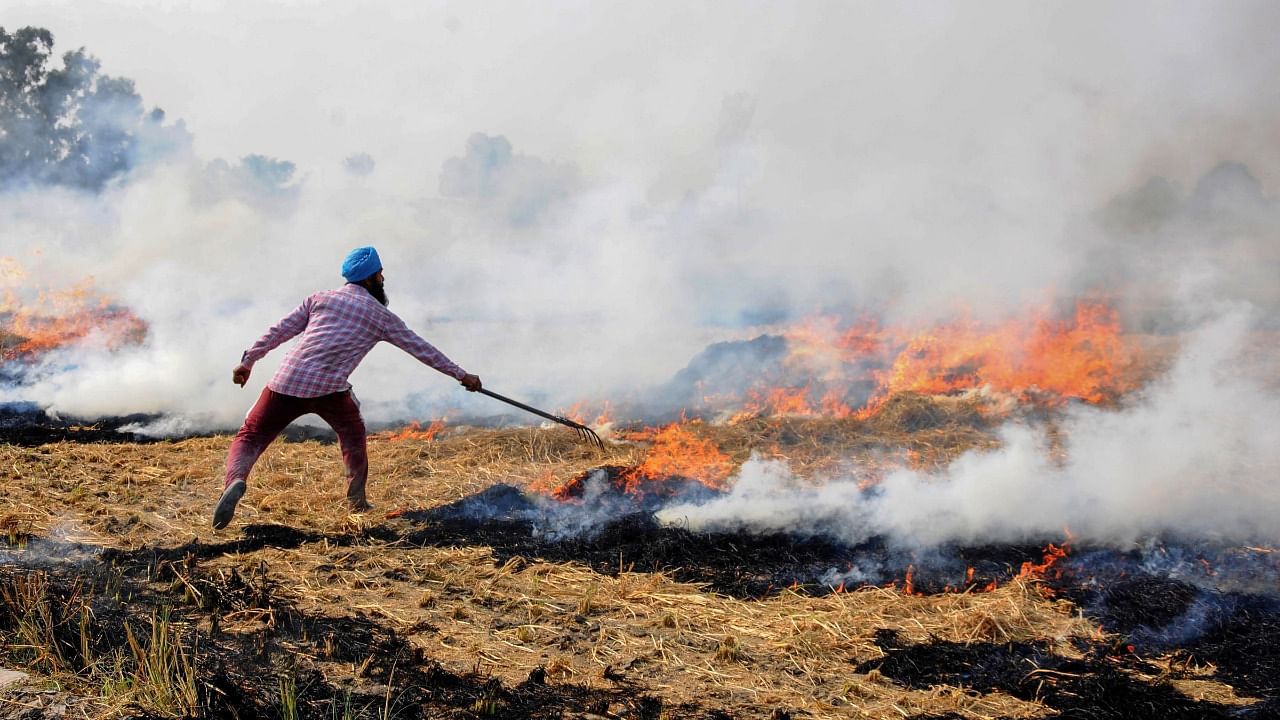
Stubble burning in Punjab and Haryana contributed to a decline in agricultural productivity, according to a new study by an independent group of scientists and experts.
The global study — ‘A systems lens to evaluate the compound human health impacts of anthropogenic activities’ — was recently released in the journal One Earth, which the Indian School of Business has been part of along with a range of global interdisciplinary experts.
Researchers from Columbia University, University of Washington, Boston University, and the University of Delaware also collaborated on this multidisciplinary research.
The study illustrates the case of elevated levels of fine particulate matter and nitrogen dioxide that have been observed at the end of the Kharif growing season (monsoon) in Punjab and Haryana due to extensive rice biomass burning.
Also Read | Air quality commission asks NCR states to adopt ISRO's protocol for farm fire estimation
Similarly, elevated surface levels of ozone have also been attributed to be a major cause of declined crop productivity for wheat, rice, cotton, and soybeans in India. All these, indicate that agriculture and aerosol emissions continue to be as important as Green House Gas (GHG) emissions in influencing regional environmental conditions and their collective consequences on human health.
Prof Ashwini Chhatre, Associate Professor, Public Policy, ISB, who led the research in South Asia said: “Agricultural practices impact air quality, but air quality also impacts agriculture, all amplified by the human-induced climate effect. In complex human environment systems, these evolving, multifaceted interactions must be factored into policymaking. The study points out how useful and effective policy responses need to take multiple factors and interactions into account, and highlights the need to avoid simplistic explanations.”
Dr Deepti Singh, assistant professor, University of Washington and lead author of the paper said: “We offer a framework to assess the overall health impacts from multiple parts of Earth’s natural systems, which are all changing at the same time because of human impacts. These changes must be carefully and comprehensively scrutinised to drive effective policy changes at the country as well as global level.”
Dr Roxy Mathew Koll, Scientist, Indian Institute of Tropical Meteorology said, “We are going through rapid environmental changes that are complex and multi-faceted. For example, simultaneous exposure to extreme weather events due to large scale climate change, poor air quality due to local air pollution, and food-water crises can lead to complex and compound health issues in developing nations.:
According to him, another example is when seawater intrusion along coastal regions leads to diseases like cholera but also compromises the agriculture (food) and water quality over the region.
Check out latest DH videos here